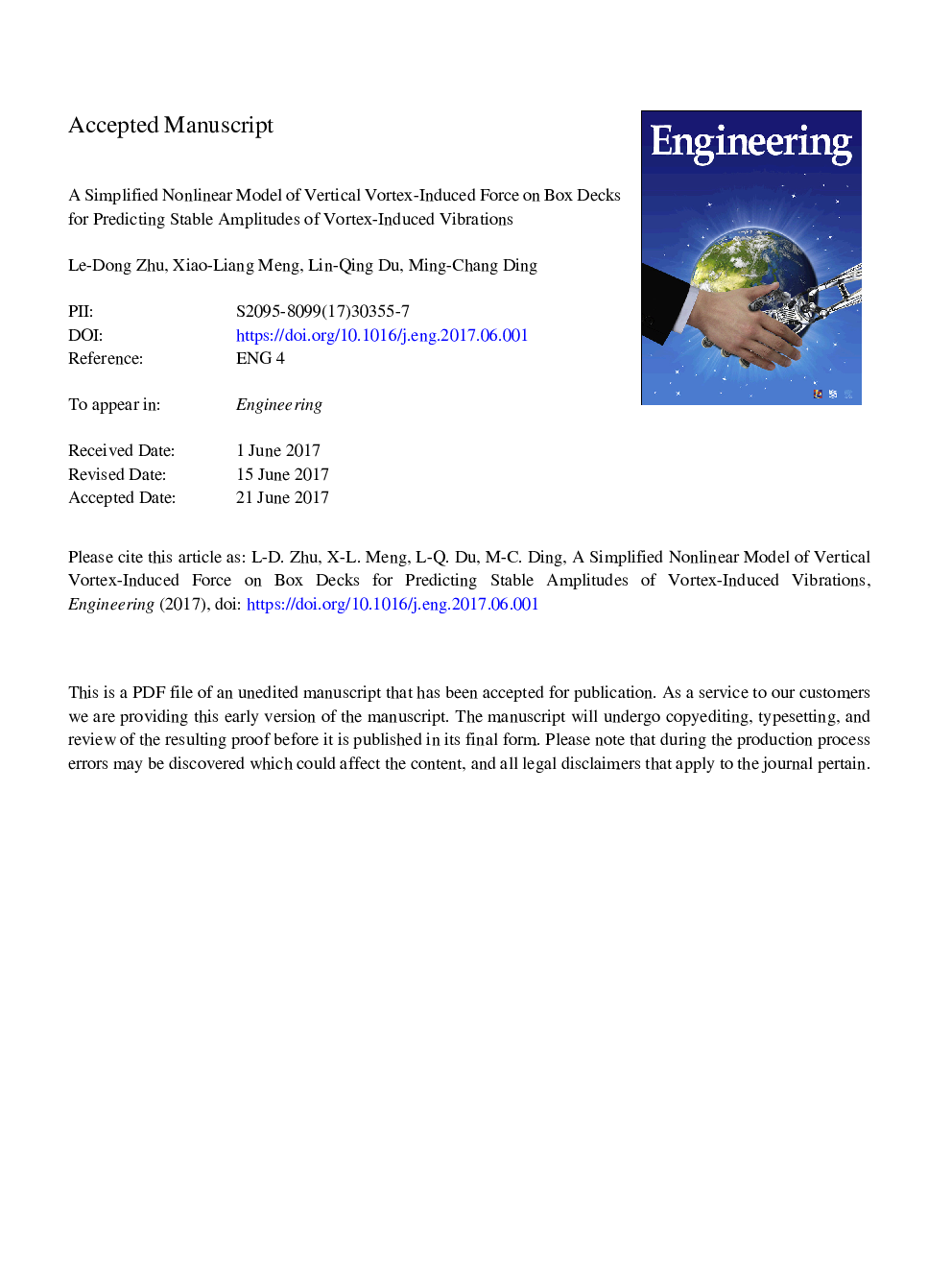| Article ID | Journal | Published Year | Pages | File Type |
|---|---|---|---|---|
| 6893398 | Engineering | 2017 | 13 Pages |
Abstract
Wind-tunnel tests of a large-scale sectional model with synchronous measurements of force and vibration responses were carried out to investigate the nonlinear behaviors of vertical vortex-induced forces (VIFs) on three typical box decks (i.e., fully closed box, centrally slotted box, and semi-closed box). The mechanisms of the onset, development, and self-limiting phenomenon of the vertical vortex-induced vibration (VIV) were also explored by analyzing the energy evolution of different vertical VIF components and their contributions to the vertical VIV responses. The results show that the nonlinear components of the vertical VIF often differ from deck to deck; the most important components of the vertical VIF, governing the stable amplitudes of the vertical VIV responses, are the linear and cubic components of velocity contained in the self-excited aerodynamic damping forces. The former provides a constant negative damping ratio to the vibration system and is thus the essential power driving the development of the VIV amplitude, while the latter provides a positive damping ratio proportional to the square of the vibration velocity and is actually the inherent factor making the VIV amplitude self-limiting. On these bases, a universal simplified nonlinear mathematical model of the vertical VIF on box decks of bridges is presented and verified in this paper; it can be used to predict the stable amplitudes of the vertical VIV of long-span bridges with satisfactory accuracy.
Keywords
Related Topics
Physical Sciences and Engineering
Computer Science
Computer Science (General)
Authors
Le-Dong Zhu, Xiao-Liang Meng, Lin-Qing Du, Ming-Chang Ding,
